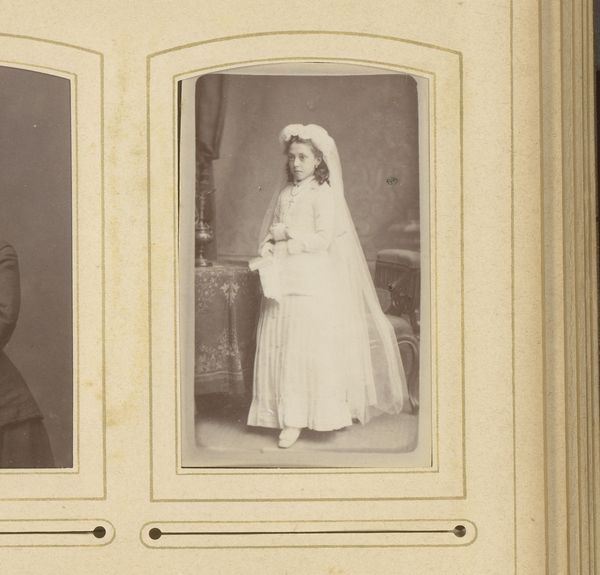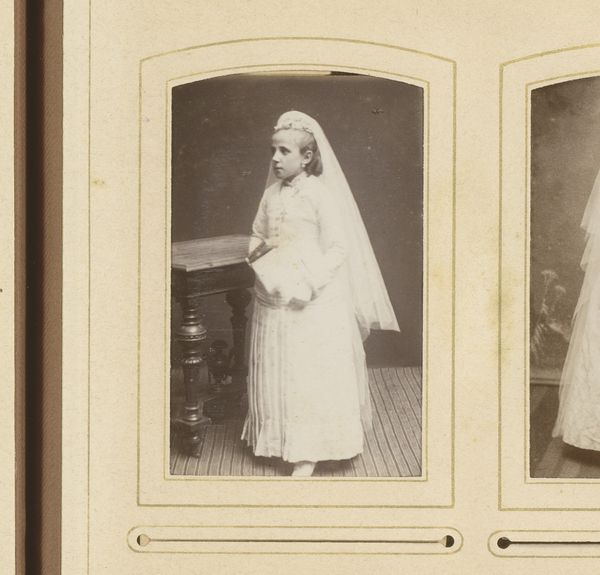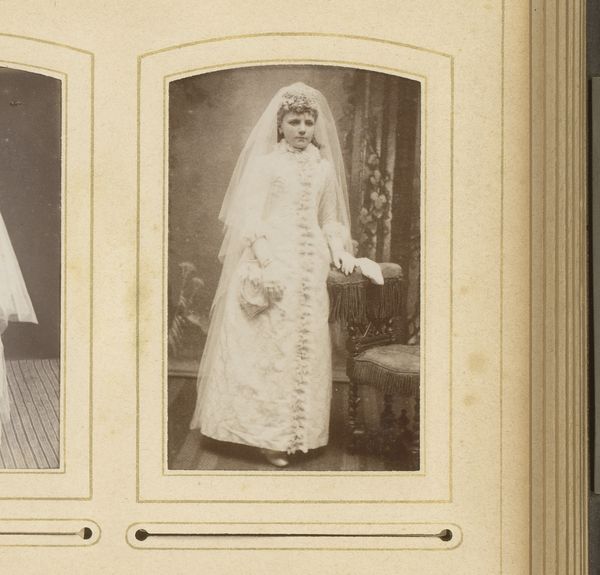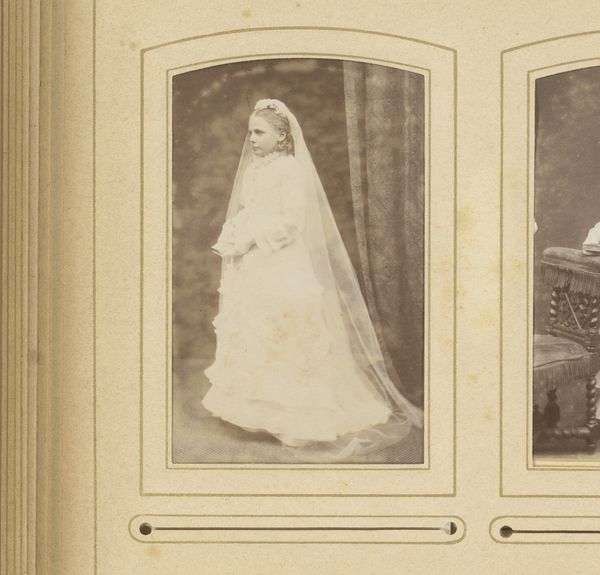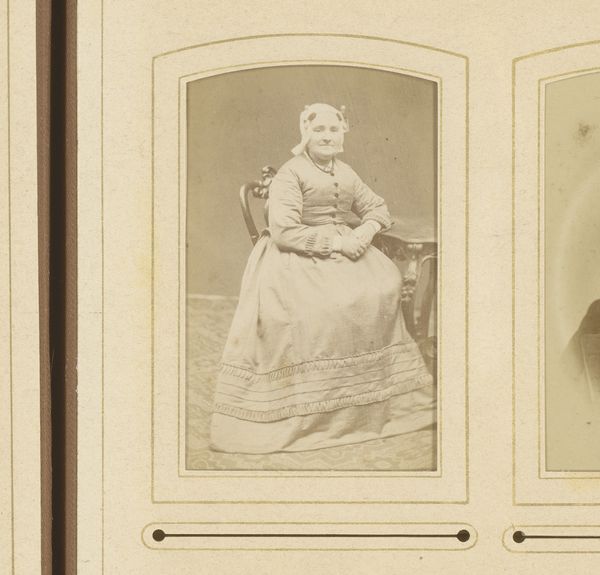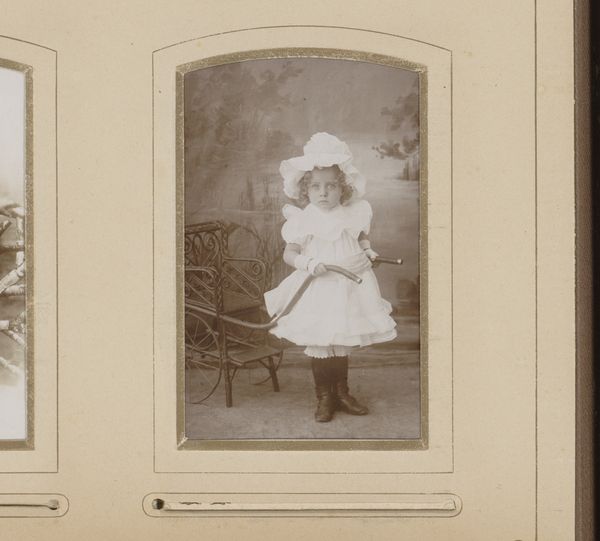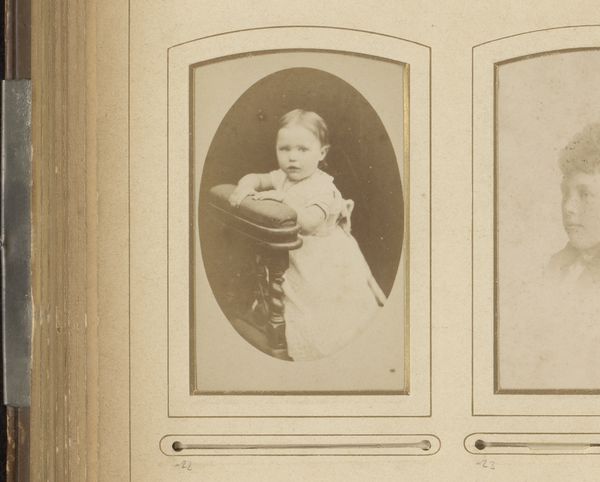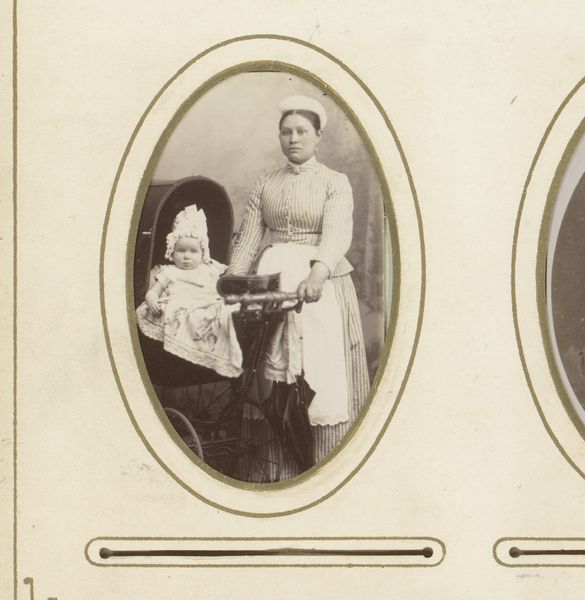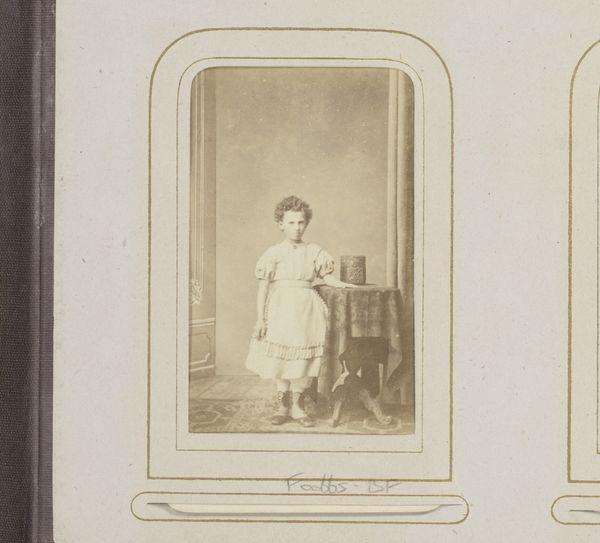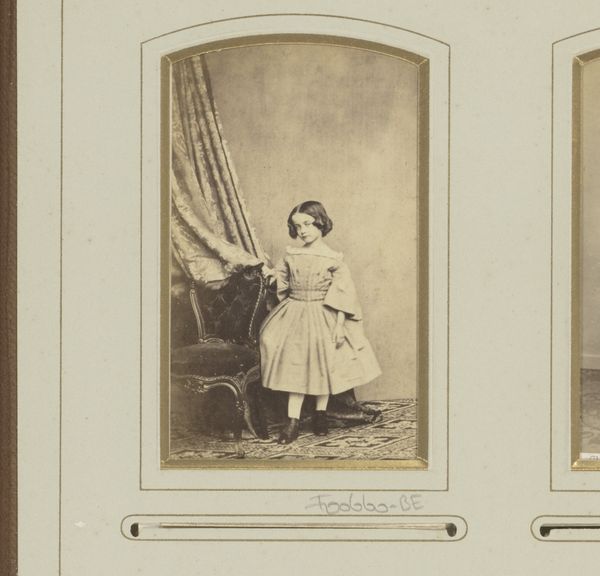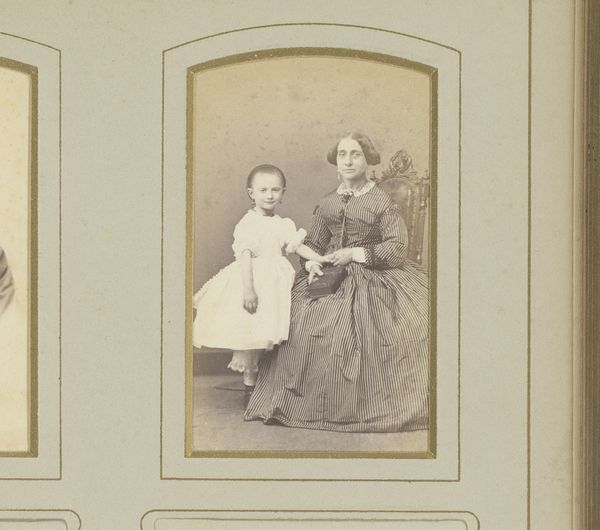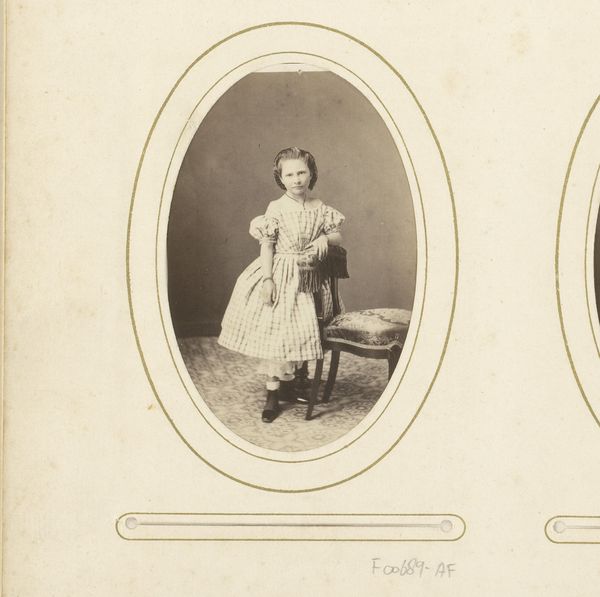
Portret van een meisje in communiejurk, staand bij een stoel 1868 - 1900
0:00
0:00
photography
#
portrait
#
photography
#
genre-painting
Dimensions: height 85 mm, width 53 mm
Copyright: Rijks Museum: Open Domain
Curator: I find this image strangely haunting, like a memento mori disguised as innocence. Editor: Well, let's contextualize what we're looking at. This is a photograph entitled "Portret van een meisje in communiejurk, staand bij een stoel" or "Portrait of a girl in communion dress, standing by a chair," taken sometime between 1868 and 1900 by Hermanus Jodocus Weesing. We see a young girl in her communion dress posing stiffly next to a chair. Curator: It's the layers of white that strike me, materially so symbolic. The lace, the veil, the tiered dress. There's so much fabric here; what were the textile economies supporting these displays? How readily available would such ornamentation have been? Editor: Right, the communion dress acts as a marker of transition within a deeply religious societal framework. It signifies purity, devotion, and belonging, but also societal expectations being imposed on the female body. It’s interesting to examine this image alongside the religious climate of the time and evolving ideas of womanhood and female innocence. Curator: Her stillness is almost unnerving. Is it patience, resignation, or even defiance? Children were increasingly presented as vessels of piety, but photography, though technically novel, perpetuated a mode of visual constraint. Editor: Indeed, the formal, constructed nature of the photograph, its albumen print perhaps painstakingly hand-toned, echoes the rigid social constraints imposed on girls at the time. The act of making itself contributes to our understanding of how images play roles in ideological regulation. It allows us to speculate about the girl herself. Did she dream beyond what's in view? Curator: I see both performance and capture. Editor: As do I, highlighting for me the rich, interwoven narratives present in material artifacts and our readings of them. Thank you for drawing out that rich sociohistorical tapestry!
Comments
No comments
Be the first to comment and join the conversation on the ultimate creative platform.
